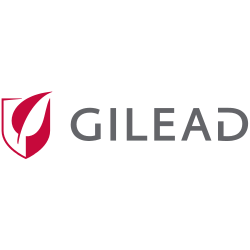
San Francisco
From the very beginning and throughout the HIV epidemic, San Francisco has led the way in setting standards for prevention, care and treatment recognized around the world.
- San Francisco General Hospital was the first in the country to recommend treatment for all persons living with HIV, a policy which has since been adopted nationwide.
- The City was among the first to conduct implementation programs for PrEP.
The City has a robust HIV surveillance system, widespread HIV testing services, syringe access programs, comprehensive HIV care in the public and private sector, and strong linkages between internationally renowned community organizations and scientists.
As a result of all these activities, HIV prevention and treatment have become more successful each year—now, 94% of San Franciscans living with HIV are aware of their infection, 89% are linked to medical care within 90 days of their diagnosis, and approximately 85% of all San Franciscans living with HIV are receiving antiretroviral treatment.
Yet, data reported annually from the San Francisco Department of Public Health Annual show that not all San Franciscans achieve the same positive health outcomes, in fact, there are stark disparities.
We have more work to do.
Getting to Zero SF
San Francisco is on the path to achieving the UNAIDS vision of “Getting to Zero”: zero new HIV infections, zero HIV deaths, and zero HIV stigma.
We are a collective impact1 initiative made up of a broad coalition of individual community members and advocates, community-based organizations, schools, businesses, government agencies, and providers from different disciplines who work together under a common agenda to achieve this vision. This initiative is made possible because of the innovative work started by existing organizations during the course of the City’s HIV epidemic and the thousands of San Franciscans who choose to take an HIV test, opt into HIV care, negotiate safer sex and drug use practices, and champion an inclusive community.
Here are recent publications about Getting to Zero San Francisco:
- Buchbinder SP, Havlir DV. Getting to Zero San Francisco: A Collective Impact Approach. J Acquir Immune Defic Syndr. 2019 Dec;82 Suppl 3(Suppl 3):S176-S182.
- Kirby T. Aiming to end San Francisco’s HIV epidemic. Lancet HIV. 2019 Feb;6(2):e77-e78.
The Getting to Zero San Francisco Consortium is committed to dismantling racism and institutional bias in our systems and practices.
1“Collective impact is a network of community members, organizations, and institutions that advance equity by learning together, aligning, and integrating their actions to achieve population and systems-level change” from Kania, J., Williams, J., Schmitz, P., Brady, S., Kramer, M., & Juster, J. S. (2021). Centering Equity in Collective Impact. Stanford Social Innovation Review, 20(1), 38–45. https://doi.org/10.48558/RN5M-CA77
Our Goals
Our goals are to reduce both HIV infections and HIV deaths by 90% from their current levels by 2025.
Our strategy for 2021-2025 includes advocacy for continued funding for successful efforts and initiatives to start or expand:
- PrEP expansion
- RAPID (Rapid ART Program for HIV Diagnoses) & Retention in care
- Tackling disparities in the HIV prevention & care continuum for people experiencing homelessness
- Aging & HIV
The Getting to Zero San Francisco Consortium also convenes workgroups or task forces to mobilize and advocate around existing topics that need immediate focus or emerging topics, for example:
- COVID & HIV
- Preventing Drug Overdose Deaths in SF. Read Getting to Zero San Francisco’s Call to Action to Prevent Accidental Drug Overdose Deaths, September 2021.
- Youth HIV/STI Prevention & Care Services during COVID-19
- Housing. Read Getting to Zero San Francisco’s Housing Call to Action, April 2018.
We coordinate efforts around the city and leverage existing resources to maximize return on investment.

Our Sponsors
We welcome your support – become a sponsor







We welcome individual and corporate donations.
